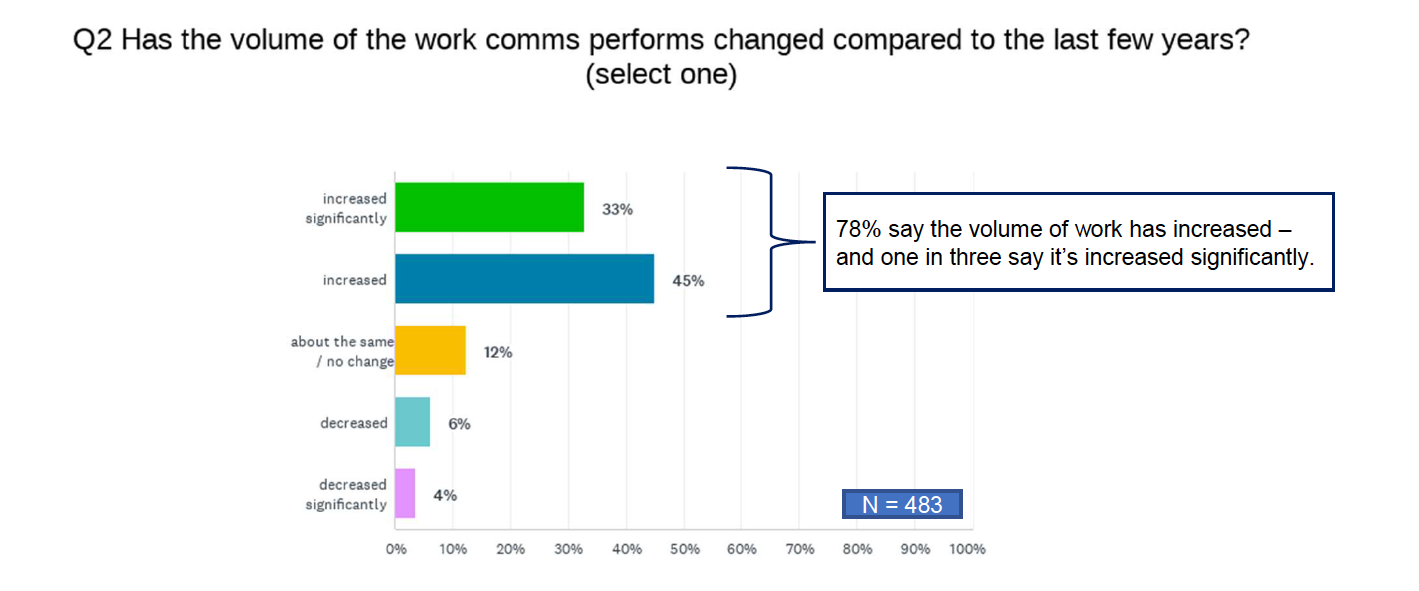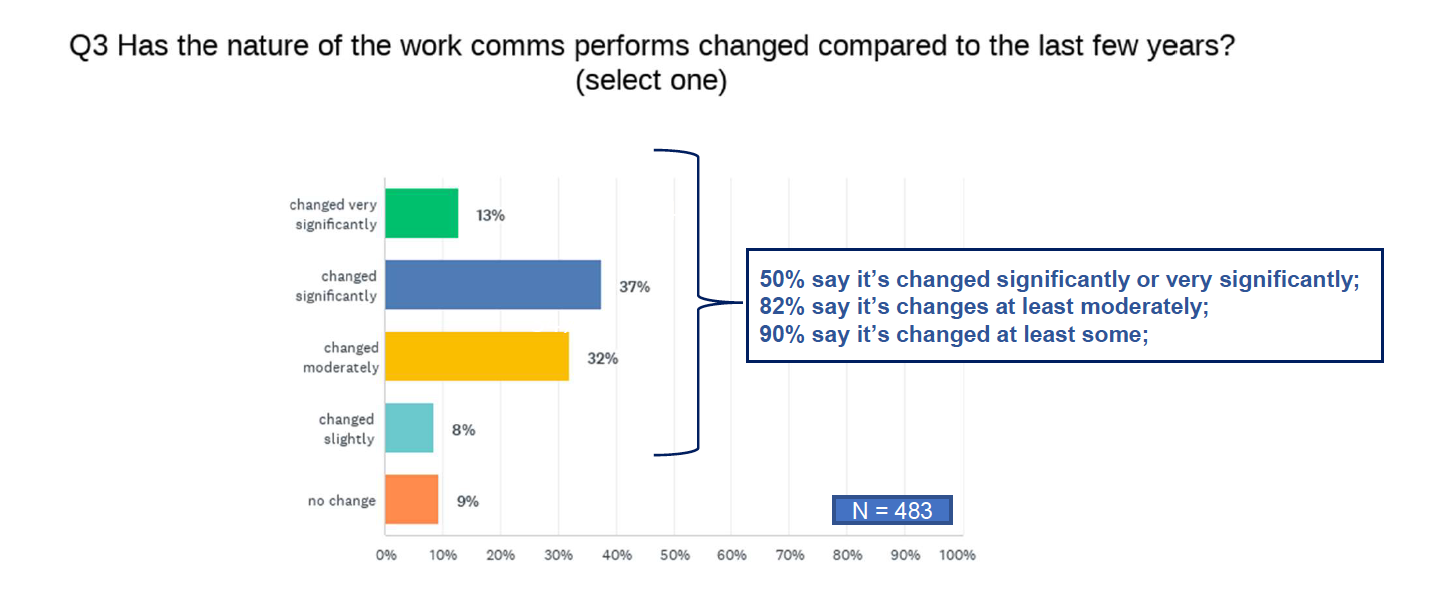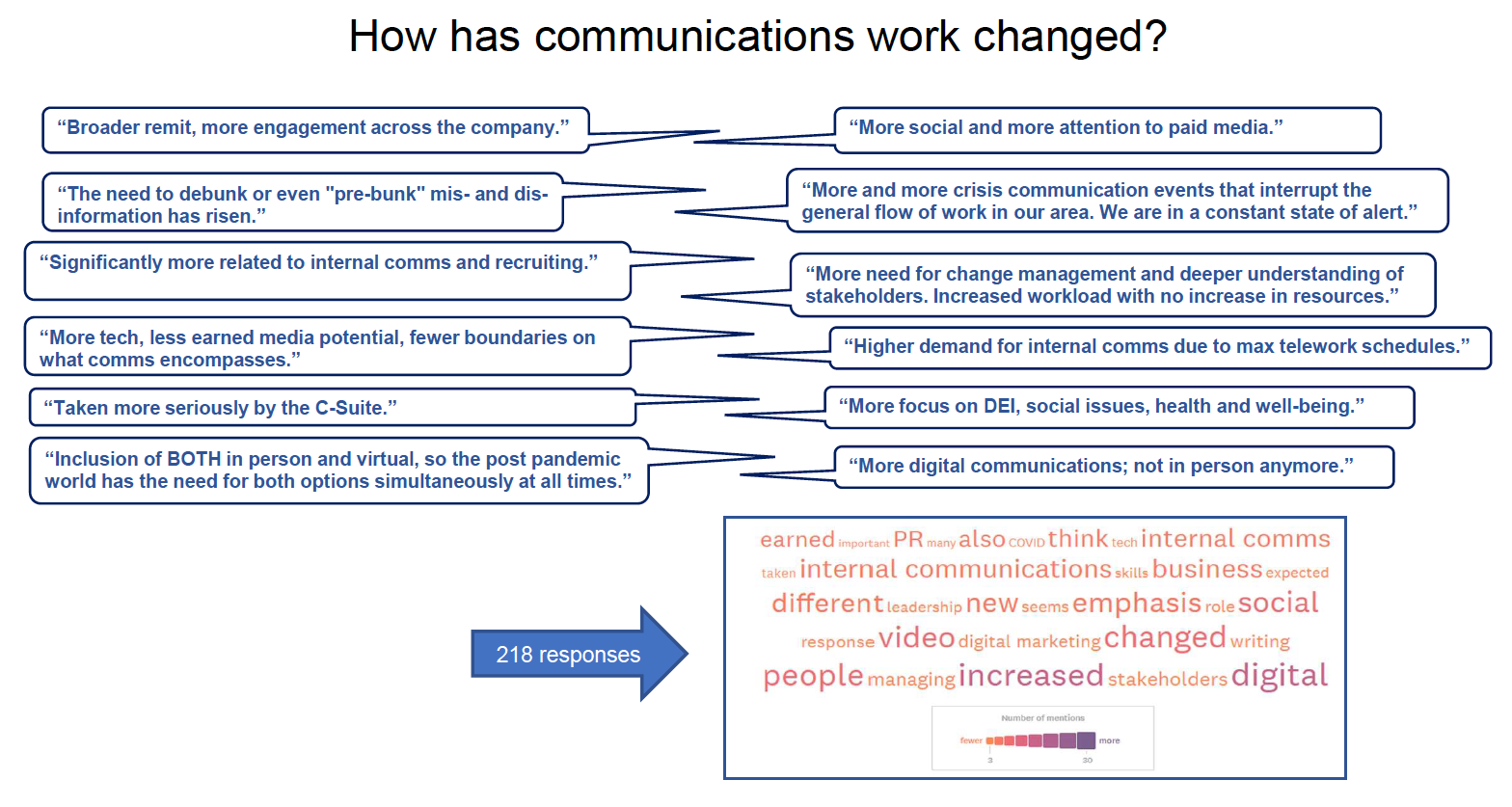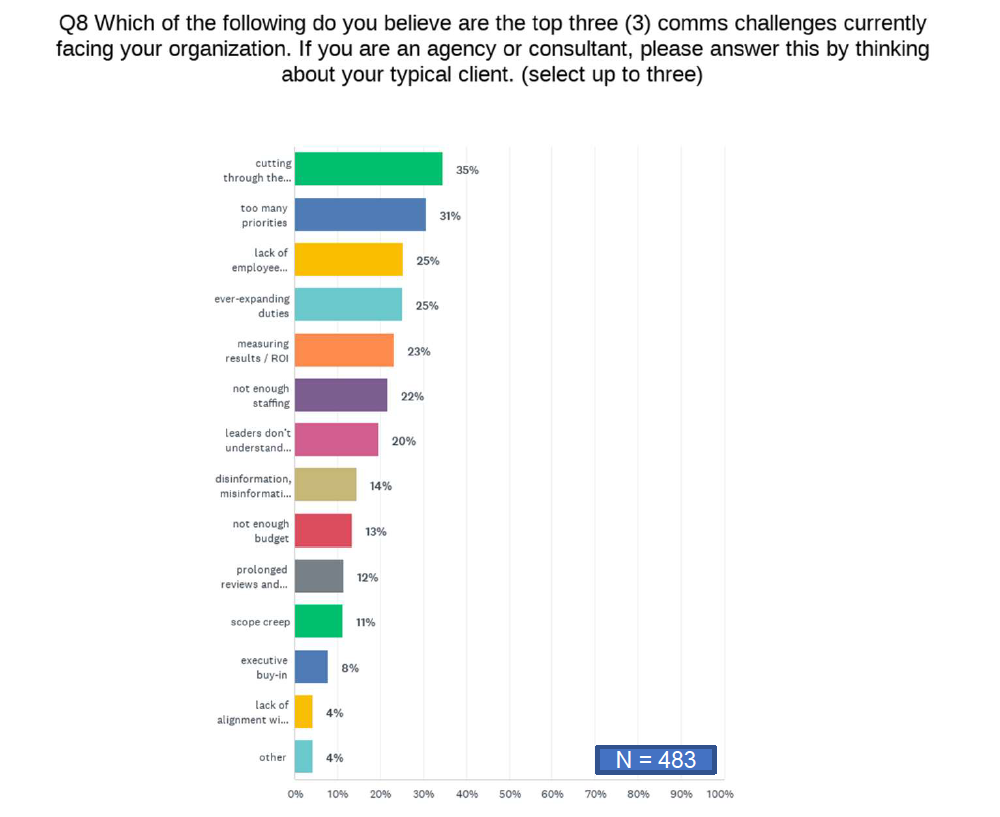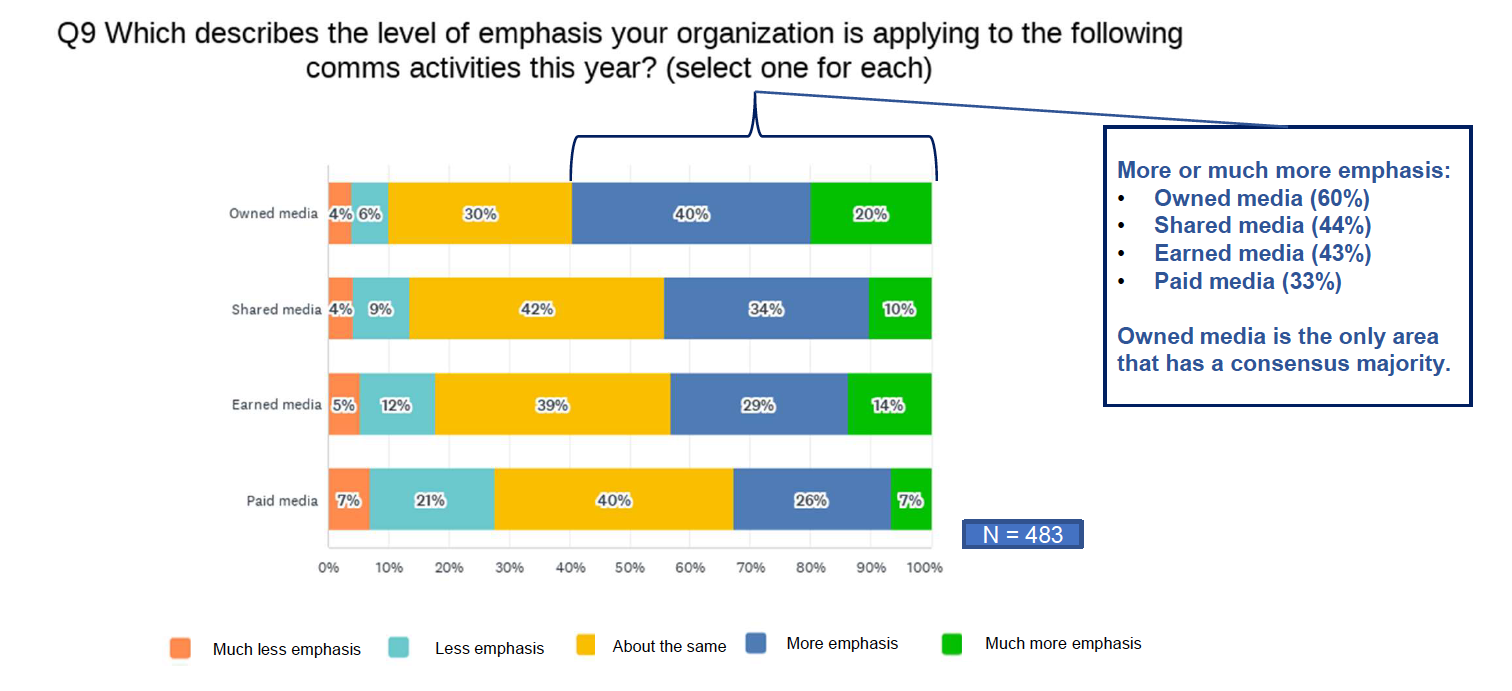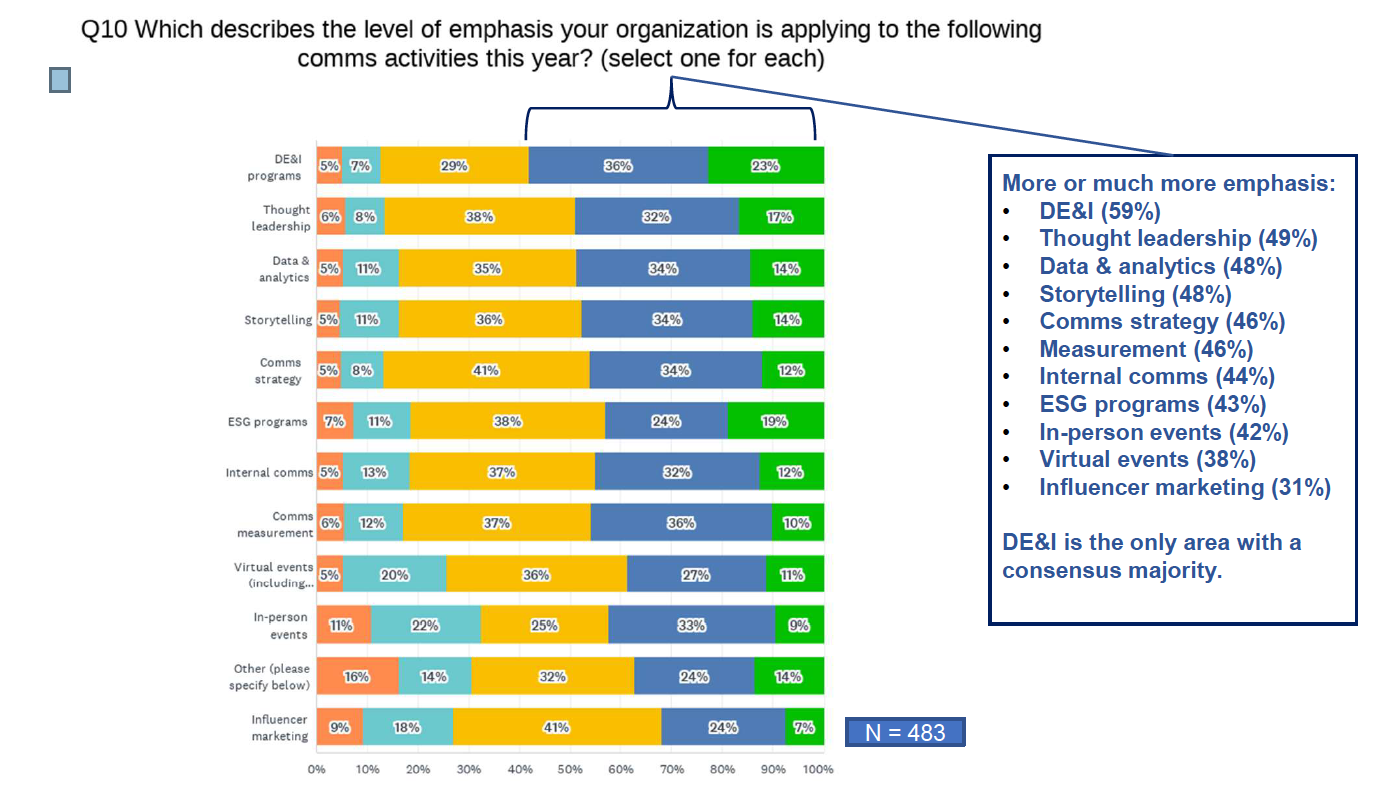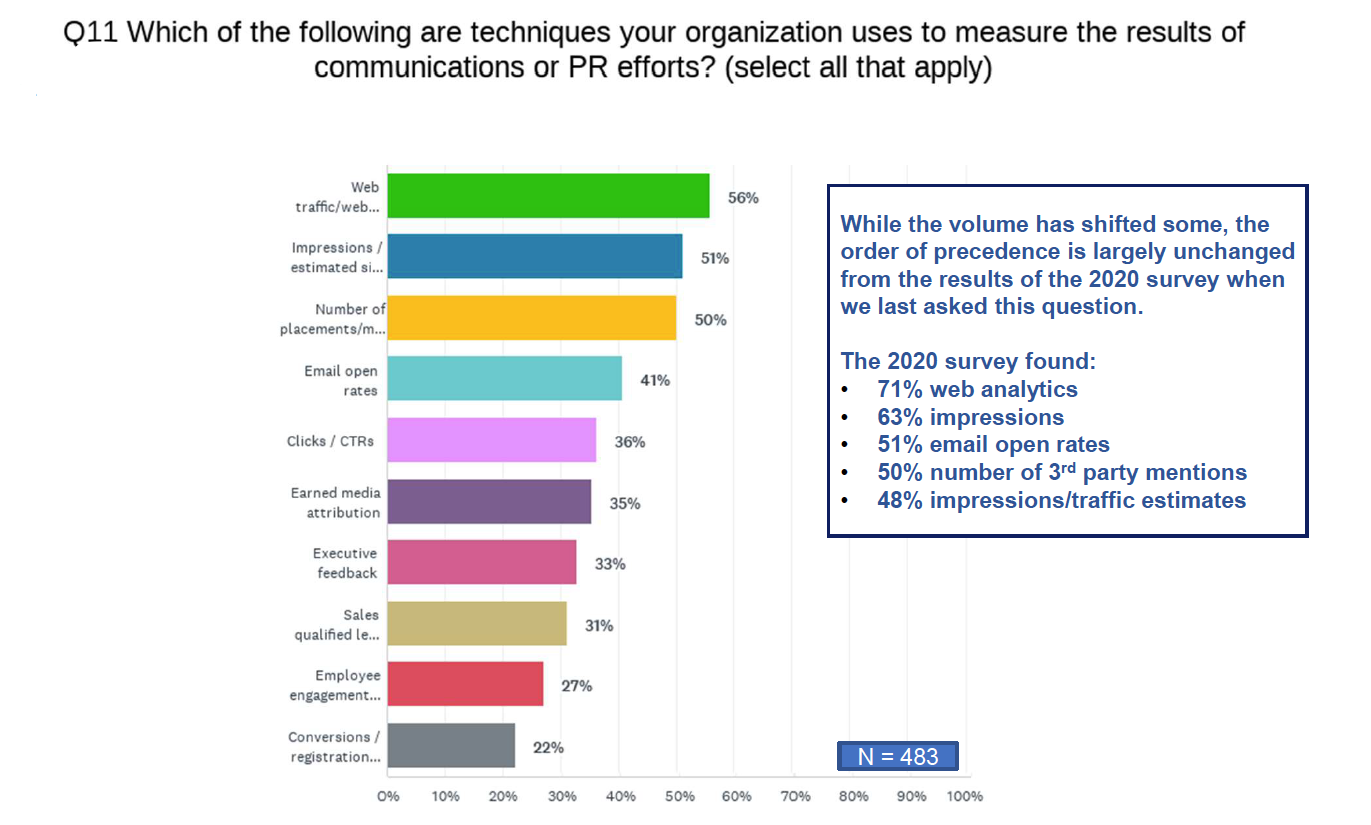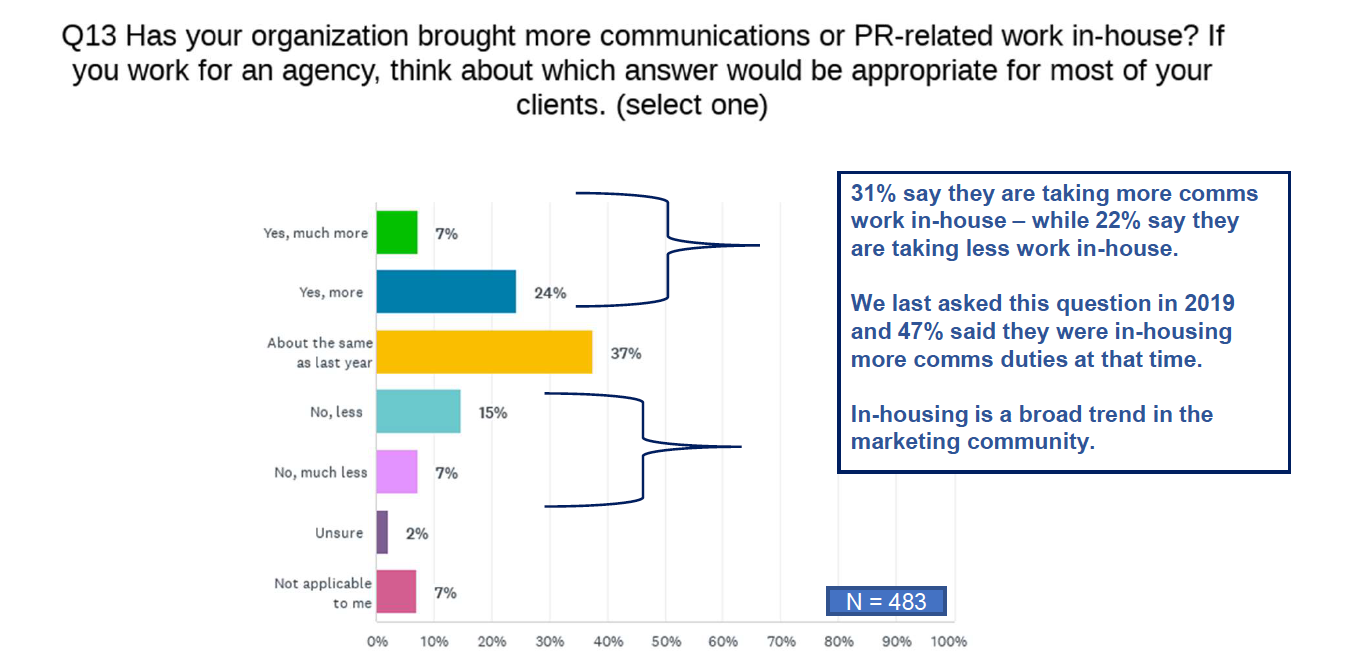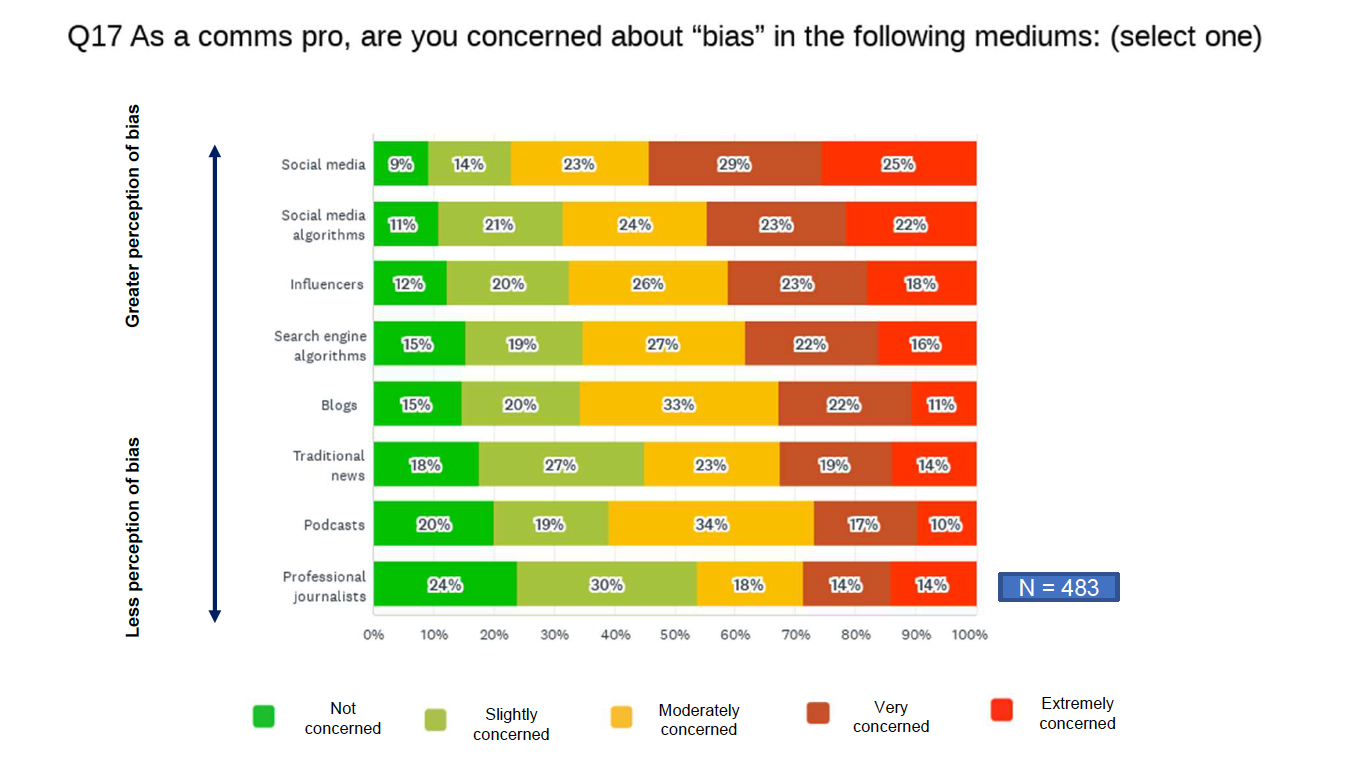As the PR industry expands its utility and integrated capacities, the volume of comms work has grown and changed, according to the 482 respondents to the fifth annual JOTW Strategic Communications Survey. More than three-quarters of respondents (78 percent) say the volume of work has increased—and one in three say it’s increased significantly. The type of work has also changed with 90 percent reporting it’s changed at least some, with 50 percent saying it’s changed significantly.
The survey was conducted in partnership between Ned’s Job of the Week (JOTW), which is edited and published by Ned Lundquist, ABC, IABC Fellow, and Sword and the Script Media by Frank Strong. The researchers were joined in fielding and analyzing the survey this year by five contributors: Gini Dietrich, Founder & CEO, Spin Sucks; Karen Swim, PR, Marketing and Social Media Consultant, Words For Hire, LLC and President of Solo PR Pro; Michelle Garrett, PR consultant, Garrett Public Relations; Stacey Miller, Vice President, Communications, Auto Care Association; and Shonali Burke, Chief Marketing Officer, Arena Stage.
“I’m also not surprised that communicators said the volume of work has increased,” said Gini Dietrich, in the report. “The Covid-era combined with social justice, climate change, war, and political unrest has made our jobs even more demanding with a focus on values and DEI. This will not change—things will continue to get more demanding, and we’ll have to evolve with the times.”
“The silver lining in intensified demand and volume for comms expertise in the wake of the past several years events is certainly validation for the ROI of our profession,” said Stacey Miller. “The challenge will be in properly allocating long-term headcount and budget—how long will these needs be amplified It’s hard to predict.”
Other key findings:
Comms budgets are up
About one in three (34 percent) say budgets are up this year, but more (38 percent) say budgets will remain the same. Another 20 percent see budgets decreasing (12 percent) or decreasing significantly (8 percent) The last time this survey asked this question, in 2020, just 18 percent expected budgets to rise and 52 percent said they would remain flat. About one-third (34 percent) indicated their organization has hiring plans.
“This is really interesting to see that some budgets are up and it looks like some organizations are planning to hire—especially because there is talk of a possible recession,” said Michelle Garrett. “That usually means marketing/comms budgets would be cut—and people might be laid off. So, I think this seems encouraging—although I would say we need to keep an eye on the economy to see if there is a recession, and if so, how bad it is.
Top three comms challenges
Respondents identified the top comms challenges as 1) cutting through the noise (35 percent); 2) too many priorities (31 percent); and 3) lack of employee experience (25 percent). The lack of employee experience is a new challenge near the top of the list for the first time.
“The results mirror the shifts that have happened in the communications landscape over the past two years,” said Karen Swim. “Cutting through the noise has become a key issue for all organizations and brands as the media landscape has become more dispersed and consumers seek information from a wide variety of sources. Additionally, we are bombarded with information at work and in our personal lives, and it has become more difficult to rise above the noise and chaos of it all.”
“Quite frankly, none of these issues surprise me, nor have they really changed over the decades. Communicators have always talked about ‘cutting through the clutter,’ and complained about leaders not understanding communication, or knowing how to measure the results of their work,” said Shonali Burke. “There is certainly a lot more noise today than there was 20 years ago, but that is what smart communication has always been about. This is why it’s so incredibly important to understand what constitutes ‘success’ for your organization and, accordingly, strategize and measure how your communications help support those goals. Please, people—make friends with metrics & analytics! That’s the one thing that will help you meet all these challenges!”
Owned media is the top area of emphasis
Respondents said their organization is placing more or much more emphasis on owned media (60 percent), like blogs, newsletters and websites. Owned media is the only area that has a consensus majority. Shared media (44 percent) was next, followed by earned media (43 percent)—a traditional bailiwick of communications—and paid media (33 percent). When asked, “Why?” respondent answers varied widely with some describing growing difficulties around media relations and a lack of strategy and planning.
DE&I is the top comms activity
Some 59 percent of respondents said their organization will place a greater emphasis on diversity, equity and inclusion (DE&I) activity this year. It was the only activity among more than a dozen listed to earn 50 percent of the votes. DE&I was followed by thought leadership (49 percent), data & analytics (48 percent), storytelling (48 percent), comms strategy (46 percent), measurement (46 percent), internal comms (44 percent) and ESG programs (43 percent).
Most common comms measurement methods
The most common ways communicators are measuring results are web traffic (56 percent), impressions 51 percent, and the number of placements (50 percent). The order of precedents of these methods is very similar to the last time this question was asked in 2020.
A mix of internal and external resources
About one in three (31 percent) say they are taking more comms work in-house—while 22 percent say they are taking less work in-house. However, 36 percent also said they will send more work to outside resources such as agencies and freelancers. Execution or “an extra pair of hands” is the top reason respondents say they hire an agency. It’s the only choice with a majority (53 percent) of the votes. Agencies and freelancers were asked separately about the potential for new business this year—70 percent said new business would increase (62 percent) or increase significantly (8 percent).
“Organizations have downsized before, and that has often led to more work being down by someone outside the organization,” said Ned Lundquist. “But that someone is often the same person whose position was eliminated. The pandemic has led to a similar situation where companies had to get real lean real quick, but still need competent help, which means opportunities for independent communication professionals.”
Organizational trust in traditional media
More comms pros say their organization trusts the traditional media than do not; still, it’s less than half (49 percent) while about 1 in 5 (22 percent) say their organization does not trust the traditional media.
Concerns about bias
Bias in media of all forms—from social media to search algorithms to professional journalists—is very much on the minds of communications professionals. Social media earned the lowest marks for bias, while traditional journalists earned the best marks. More than half (54 percent) are very or extremely concerned about bias on social media—compared to 28 percent who are very or extremely concerned about bias among professional journalists.
“Great comms are invaluable in times of change—and the pace of change seems to get faster every year,” said Frank Strong. “Savvy organizations will hang on to their comms pros and field them with the resources they need to help the organization communicate how it will manage in the face of economic headwinds. A recession offers an opportunity to communicate in a market with less noise because many other organization impulsively pull back.”
Download the full report here.
This survey was a joint effort between Ned’s Job of the Week (JOTW) and Sword and the Script Media, LLC. Subscribers to both organizations were solicited to take the survey through mentions in the weekly newsletter, dedicated email requests and social media. Gini Dietrich and Karen Swim also solicited respondents from their respective communities at Spin Sucks and Solo PR Pro.
In total 483 respondents took the survey online, using Survey Monkey, from Friday, May 6, 2022, until June 14, 2022. Survey takers were incentivized to take the survey with an offer to be entered for a chance to win one of three gift cards ($100, $50 and $25).
Most are based in the U.S. (76%) and 70% have 11 or more years of experience. Sixty percent are in-house communicators; another 15% work for agencies and 25% are self-employed as consultants or freelancers.


